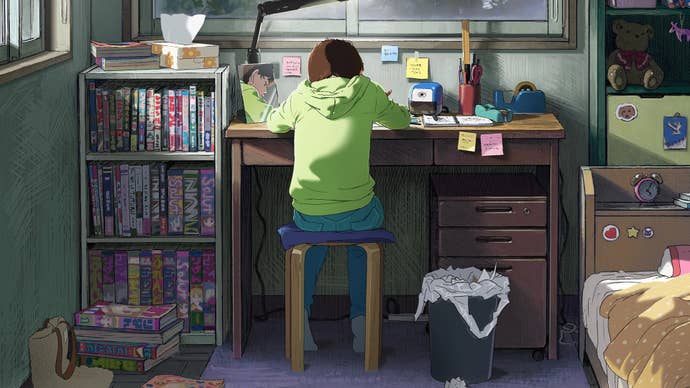Now that Look Back is getting a movie, you should really check out the rest of the Chainsaw Man creator's excellent one shots
There's a lot of great work to be found under Tatsuki Fujimoto's belt.
If you call yourself an anime and manga fan, you almost definitely know Chainsaw Man already. How can you not! While it isn't selling as much as its contemporaries like Jujutsu Kaisen and My Hero Academia, it's still an incredibly popular series, with a passionate fandom that's created countless bits of fanart, cosplays, and more. Now, as announced this week, creator Tatsuki Fujimoto's Look Back is also getting an anime adaptation, based on the 2021 one-shot of the same name - and I can't see a better excuse to look past the beast that is Chainsaw Man to check out some of the other manga artist's excellent one-shots.
Like most manga artists, Fujimoto didn't just start off with a hit like Chainsaw Man. He actually had another serialisation prior to Chainsaw Man called Fire Punch, though for today let's stick to just the one-shots (not least because Fire Punch is… a lot). Fujimoto's earlier works were actually categorised into a couple of volumes called Tatsuki Fujimoto Before Chainsaw Man, respectively titled 17-21, and 22-26, the numbers representing the age he was at the different points he wrote the collected one-shots.
I think it's always a bit of a treat to get to see the earlier, rougher, less thought out works of an artist that at this point in time has quite highly revered. The thing about Chainsaw Man is that yes, it can be dark, but it's also caring and empathetic towards its characters. Fujimoto's earlier work isn't always so nice, even sometimes teetering on the brink of being overly-edgy. I can't always blame him for that, the first story in the first collection was from when he was 17, and I don't expect young people to be paragons of morality.
What I do find interesting about Fujimoto's manga origins is that you can see how he got to be the storyteller he is today - he even borrows from himself, like with one story called Nayuta of the Prophecy, with the the name and design of the titular character being recycled for the second part of Chainsaw Man. You can see the through line of "unsure of the kind of artist I am" to "I'm a bit surer, but still have a lot to figure out" and that's one of my favourite types of journeys to observe.
Where these collections cover before Chainsaw Man, though, there is of course an after Chainsaw Man, which is where his best works, Look Back and Goodbye Eri, emerge and truly show what Fujimoto is capable of. Look Back, which as mentioned earlier is getting a film, is the kind of thing every artist inevitably ends up making: a piece of art about the medium it's made in, i.e. a film about films, a song about music, and in this case, a manga about manga.

It's all about this insatiable desire to make art, and more importantly, get better at it, and more specifically, get better at it with a friend, simply because it feels good to improve alongside the people that matter most to you. Goodbye Eri acts as an interesting follow-up to that, as it's where Fujimoto's love for film comes through the most, still expressing that desire to create but in an entirely different way. It has some of the most unusual panelling you'll find in a manga, as most pages just consist of four, landscape panels, as if they were stills from a film.
That fits with the themes of the manga, given that it's about a teen boy coping with the death of his mother, life in general, and an oddball new friend through the lens of his phone's camera. Where Chainsaw Man is loud, violent, and visceral, Fujimoto's titles like Look Back and Goodbye Eri are quiet, contemplative, and feel like a sad, slow death. Chainsaw Man is sometimes held back by its shonen origins, so it's great to see someone like Fujimoto (weird, unpredictable, and messy) flex in such a way. So before Look Back gets its film adaptation, take a look at the comic it's based on, and try out a few others while you're at it.

.jpg?width=70&height=70&fit=crop&quality=60&format=png&auto=webp)







